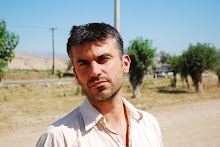One of the most dramatic, scenic and accessible lakes in Tajikistan is located at 2250m above sea level on the Southern side of the Fan mountains at Iskanderkul. A crystal lake of turquoise glacial melt created by an ancient landslide sinks to a depth of 72m, and offers a refreshing and revitalizing dip for the brave and foolhardy.
A national holiday on a Tuesday in mid November, would normally mean nothing more than a duvet day, but with the bright autumnal sun and crisp air, a trip to arguably the most visited tourist spot in the country was long over due. The trusty Niva, on its possibly last excursion before being sold on to a cotton picker, cruised a few 1000m to the 5km tunnel of certain death. This feat of Iranian engineering was little more than a mine shaft where cars, taxis, and trucks bounce along the pitted rutted surface filling the darkness with noxious blue hazy fumes illuminated by fading headlights. However, as the Chinese contractor’s have diverted the underground river and provided a concrete lining, the tunnel is currently being downgraded from the tunnel of doom to the tunnel of slight gloominess. The alternative to the ghost ride is the Anzob pass, a 3300m high rugged track that disappears into the clouds and reappears several hours later.
As we wound our way along the track, it snaked its way to Iskandakul where the lake rippled by the gentle breeze and captured the reflection of the encasing snow tipped mountains. On the shoreline a dilapidated soviet summer camp slowly falls into ruin and a presidential Datcha (summer home) commands impressive views from its conservatory windows.
We drove further into mountains to a homestay in the tiny hamlet of Saratog where a warm welcome helped to thaw us from the crisp mountain air. There are a multitude of tracks to explore that contour the river basins, however those of us that suffer from mountain hiking inexperience should chose to follow the sun and not the shadow. The sun skipped town at 5.00pm as we clambered over a new swing bridge to the partially constructed mosque before meandering through the wood-smoke back to our homestay.
As the temperature plummeted, Dilovar stoked up the outside Banya (sauna and shower) before serving a delicacy of soup and chips. As the effect of the sauna drifted away, we huddled around the inept cheap Chinese electric fire until the power cut out at 10.00p.m and crawled under a dormitories worth of blankets to keep the cold at bay. Breakfast was not until 8.00am, as according to Dilovar, it’s too cold to do anything worthwhile before this time.
We spent the next day exploring never ending trails, crossing rickety wooden bridges and sipping from the icy mountain streams, until the time caught up with us and the city called. A few friends have trekked from Iskandakul over the mountain passes to the Seven Lakes where more breath taking views await the more adventurous and hardy. There is a pang of regret that we never made the journey.





















.JPG)






.JPG)
.JPG)






